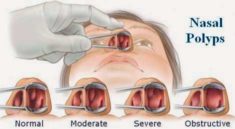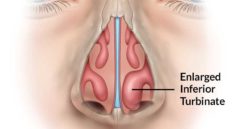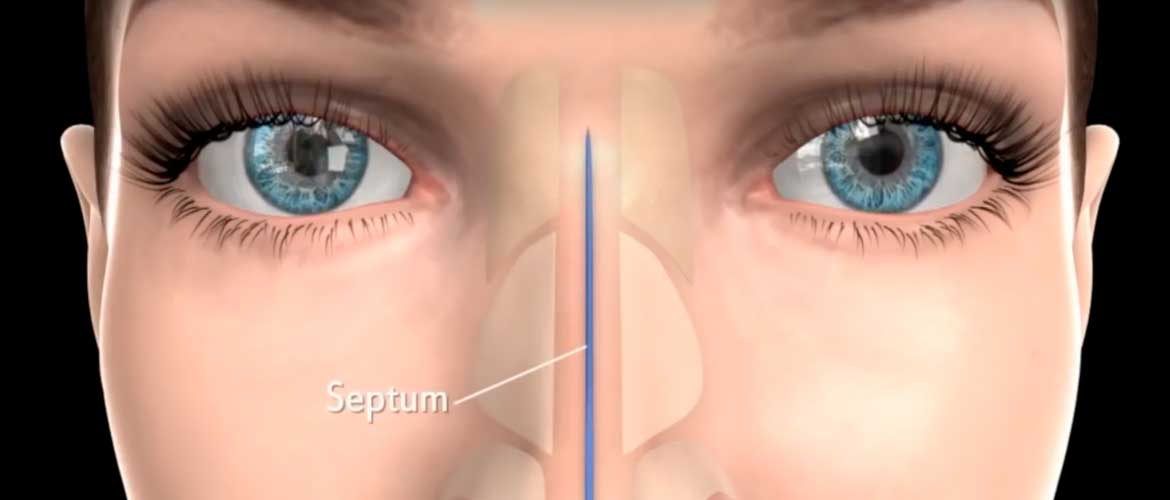
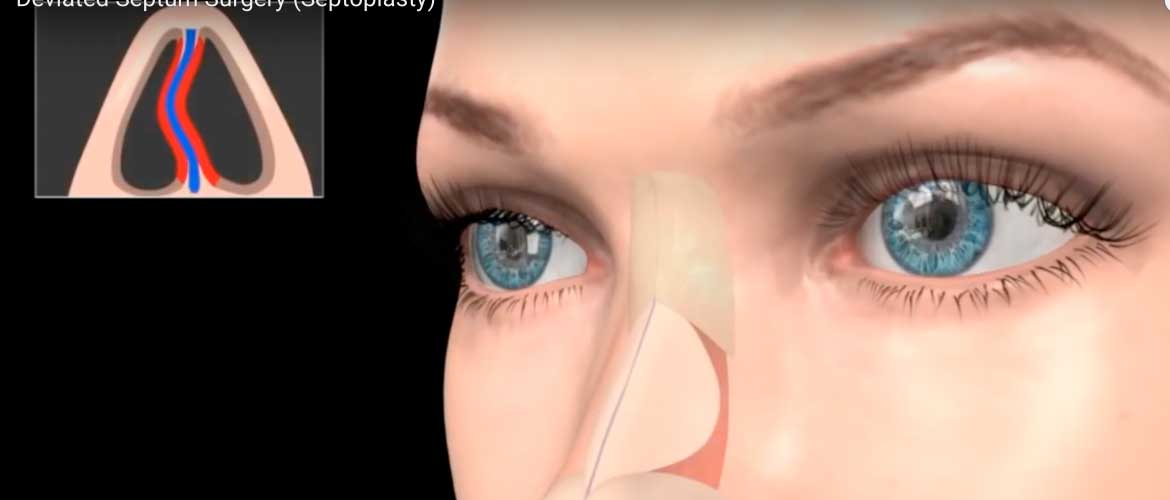
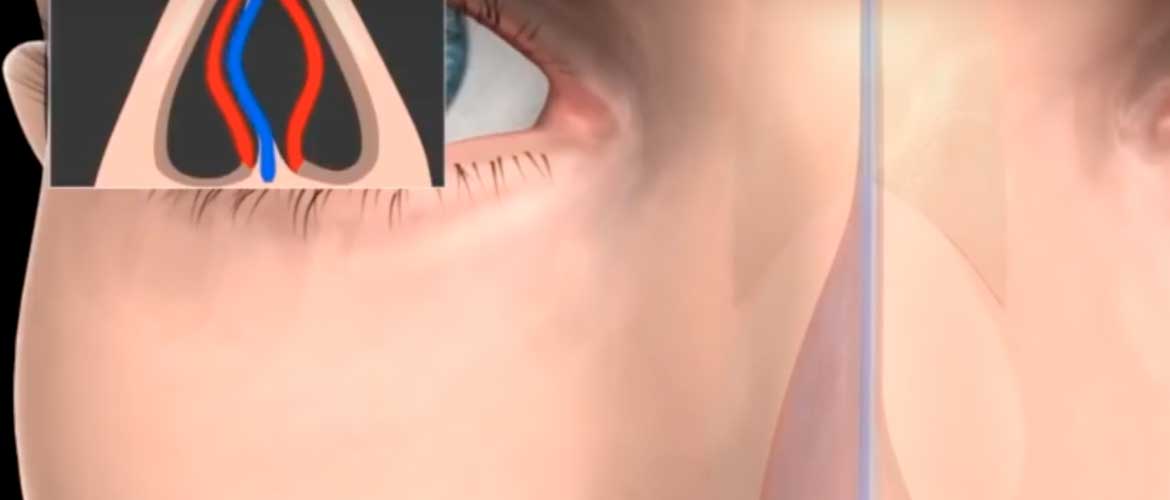
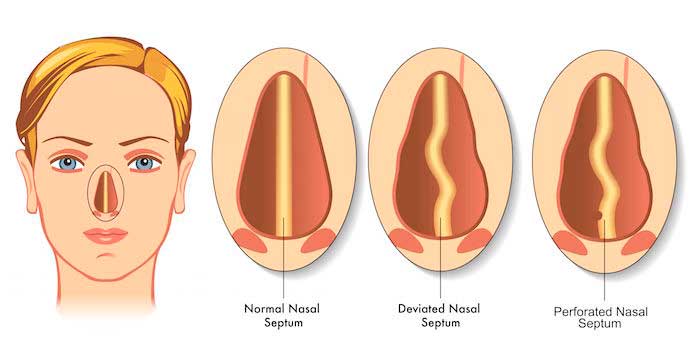
INFORMATION
Septoplasty is a surgical procedure to correct a deviated septum. Septoplasty straightens the septum, allowing for better airflow through your nose.
Preparing for a septoplasty
Your doctor may ask you to stop taking certain medications two weeks before the surgery. These medications may include aspirin (Bufferin), ibuprofen (Advil), and other blood thinners. This is done to reduce your risk of excessive bleeding during and after the procedure. Be sure to tell your doctor if you’re allergic to certain medications or if you have a history of bleeding problems.
In some cases, people have a septoplasty under local anesthesia, which numbs the area to prevent pain. However, most people have the surgery under general anesthesia, which means they’re asleep during the procedure.
Don’t eat or drink anything after midnight the night before the procedure if you’re going to be under general anesthesia. This will help prevent you from vomiting and choking if you become nauseated from the anesthesia during surgery.
Bring a family member or friend who can drive you home after the septoplasty. General anesthesia may make you drowsy after the procedure. You shouldn’t drive until the effects have fully worn off.
Your doctor might take pictures of your nose before the procedure. Comparing photos from before and after the procedure can help you see how your nose has changed.
Septoplasty procedure
A septoplasty takes anywhere from 30 to 90 minutes to complete, depending on the complexity of the condition. You’ll be under either local or general anesthesia, depending on what you and your doctor decide is best for you.
In a typical procedure, the surgeon makes an incision on one side of your nose to access the septum. They next lift up the mucous membrane, which is the protective covering of the septum. Then the deviated septum is moved into the right position. Any barriers, such as extra pieces of bone or cartilage, are removed. The last step is the repositioning of the mucous membrane.
You may need stitches to hold the septum and membrane in place. However, packing the nose with cotton is sometimes enough to keep them in position.
Risks
As with any major surgery, septoplasty carries risks, such as bleeding, infection and an adverse reaction to the anesthetic. Other possible risks specific to septoplasty include:
- Persistence in previous symptoms, such as nasal obstruction, despite surgery
- Excessive bleeding
- A change in the shape of your nose
- An opening in the septum (septal perforation)
- A decrease in the sense of smell
- A collection of blood in the nasal space that would need to be drained (septal hematoma)
- A temporary numb sensation by the upper gum or teeth
Additional surgery may be required to treat some of these complications or if the outcome of the surgery doesn’t match your expectations. Talk to your doctor about your specific risks before surgery.
After the procedure
To further decrease the chances of bleeding and swelling, your doctor may ask that you follow these precautions for several weeks after surgery. Depending on the extent of your surgery, you may not be asked to comply with all of them:
- Avoid strenuous activities, such as aerobics and jogging. This is to decrease the chance of a blood pressure elevation that could cause a nosebleed.
- Don’t blow your nose.
- Elevate your head when you’re sleeping.
- Wear clothes that fasten in the front; don’t pull clothing, such as shirts or sweaters, over your head.
Results
Though results are most often stable, cartilage and tissue may gradually move or reshape over time. The nasal tissues are relatively stable by three to six months after surgery. However, some changes can still occur for up to a year or more after surgery.
Most people find that septoplasty improves their symptoms, such as difficulty breathing, caused by a deviated septum. The level of improvement you can expect with septoplasty may vary.
Some people find that their symptoms continue even after surgery and opt to undergo a revision septoplasty to further refine the nose and septum.
How long does it take to recover from a septoplasty?
You will probably be able to return to work or school in a few days and to your normal routine in about 3 weeks. But this varies with your job and how much surgery you had. Most people recover fully in 1 to 2 months. You will have to visit your doctor during the 3 to 4 months after your surgery.
How do you sleep after septoplasty?
Avoid any heavy lifting, bending, straining, or stooping for at least 2 weeks aftersurgery as this may cause bleeding. Light exercise may begin approximately 10 days after surgery. Try to keep your head elevated during sleep for at least 3 days aftersurgery. Sleeping on 2 or more pillows is effective.
How much bleeding is normal after septoplasty?
Most of the time, packing is removed 24 to 36 hours after surgery. Splints may be left in place for as long as 1 to 2 weeks. You may have swelling in your face for 2 to 3 days after surgery. Your nose may drain and bleed a little for 2 to 5 days aftersurgery.
Is a sinus operation painful?
Most patients manage sinus surgery pain with oral pain pills. Your doctor can tell you what to expect, based on the type of surgery you have. Facial swelling or bruising is rare, but the inside of your nose will be swollen and sore for a while. This may make breathing through your nose difficult for about two weeks.


